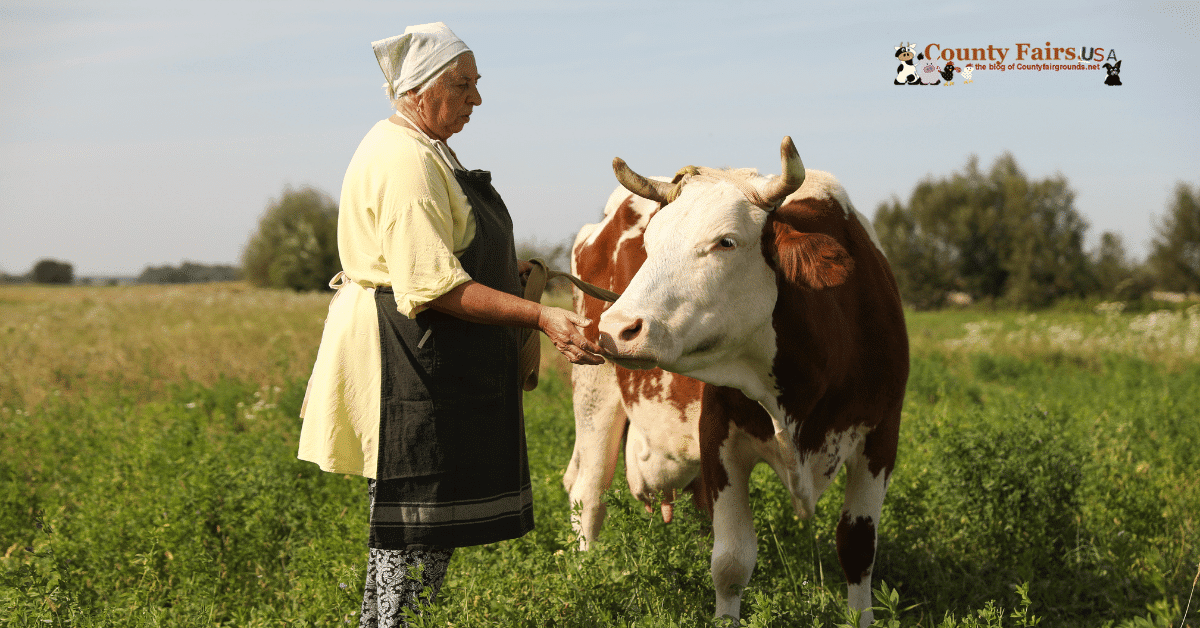Maintaining a healthy pasture is one of the most important aspects of raising cattle. Whether you’re running a small family farm or preparing your prize cow for the next county fair, pasture care plays a key role in the health, appearance, and behavior of your herd.
Top Cow Pasture Care 101 Solutions
Many county fair experts stress that good pasture practices are often what set apart blue-ribbon animals from the rest. This guide brings together practical advice rooted in real farm experience and county fair traditions.
Why Good Pasture Management Makes a Difference
Cattle that graze on well-managed pastures are often healthier, calmer, and in better condition than those raised in crowded feedlots. Pasture-fed cattle typically develop stronger immune systems, maintain a better weight balance, and require fewer medical interventions. At county fairs, judges often comment on the overall appearance and muscle tone of animals factors influenced by both genetics and nutrition.
Beyond the fairgrounds, the benefits carry over into breeding programs, milk production, and even meat quality. For small-scale and family-run operations, pasture care is not just about feeding it’s about stewardship.
The Basics of Cow Pasture Health
A quality pasture doesn’t happen by accident. It takes planning, maintenance, and seasonal adjustments.
Key components of a healthy pasture include:
- Diverse Forage: A mix of grasses and legumes like fescue, clover, and alfalfa supports nutritional needs.
- Proper Drainage: Waterlogged soil can lead to hoof diseases and poor forage growth.
- Space Management: Overcrowded pastures lead to overgrazing and stressed soil.
- Rotational Grazing: Dividing your pasture into sections and rotating cattle allows grass to recover and reduces parasite loads.
Farmers who show cattle at county fairs often implement rotational grazing using portable fencing. This helps maintain forage quality and keeps animals conditioned with daily movement.
Tips from County Fair Champions
Families who consistently produce winning livestock don’t just focus on grooming and training. Their efforts start from the ground up literally.
Soil Health Comes First
Before planting anything, they test their soil to identify pH levels and missing nutrients. This allows them to apply the right amount of lime, phosphorus, or potassium needed for forage to thrive.
Smart Seed Selection
Choosing the right grasses is more than just picking what’s popular. It depends on the region, season, and cattle breed. Some prefer cool-season grasses like ryegrass and orchardgrass, while others add legumes for nitrogen fixation and protein.
Fencing for Flexibility
Electric fencing systems are commonly used by 4-H and FFA families. They make it easier to control grazing patterns and protect young plants during regrowth phases.
Common Pasture Challenges (and How Fair Families Handle Them)
Even well-kept pastures come with challenges. The difference between a good cattle operation and a great one often lies in how those issues are handled.
Overgrazing
Allowing cows to graze too low weakens root systems and leads to soil erosion. Fair families avoid this by pulling cows off a paddock when the grass is grazed down to about 4 inches.
Weeds and Invasive Plants
Thistles, ragweed, and other unwanted plants compete with forage. Mowing, targeted grazing with goats, or spot spraying are common methods of control.
Parasites
Manure buildup and wet conditions can encourage parasites. Fair exhibitors often drag pastures to break up manure piles and use rotation to reduce the parasite life cycle.
Dry Spells and Mud Pits
Drought can stress forage while wet seasons cause mud. Solutions include installing gravel around gates and using sacrifice paddocks during tough weather.
Real-Life Examples from County Fair Exhibitors
Many successful exhibitors agree that preparing a cow for the ring starts with how it’s raised at home. Good pasture conditions can influence everything from coat shine to gait.
Take, for example, a young exhibitor from Indiana who rotates three cows through five paddocks. By spacing out grazing times and monitoring growth, she ensures constant access to fresh grass while allowing her pasture to rest. Her heifers consistently score high for condition and muscle tone.
Another family in Iowa swears by mixing oats and red clover in their spring reseeding routine. According to them, not only does it increase protein in their cows’ diet, but it also keeps their soil healthy year-round.
Seasonal Pasture Care Checklist
Each season brings new pasture tasks. Here’s a helpful month-by-month list used by experienced fair families:
Spring
- Test soil and apply lime or fertilizer if needed
- Reseed bare spots or frost-seed legumes
- Inspect and repair fencing
- Start rotating grazing zones
Summer
- Watch for heat stress and ensure water is always available
- Mow pastures to control weeds and encourage new growth
- Move cattle more frequently to avoid overgrazing
- Keep mineral blocks accessible
Fall
- Overseed cool-season grasses
- Remove dead weeds and cut back brush
- Shift to hay if forage becomes too short
- Prepare sacrifice paddocks for winter
Winter
- Manage manure to avoid run-off
- Feed stored hay or silage
- Plan next year’s layout or fencing improvements
- Maintain access to unfrozen water sources
Involving the Next Generation in Pasture Management
County fairs aren’t just competitions they’re learning grounds for future farmers. Many youth programs like 4-H and FFA encourage members to take responsibility for pasture care.
Some ways to involve young farmers:
- Assign a grazing chart or rotation schedule to monitor paddock use
- Let them test soil and record pH levels
- Teach them to identify weeds and grasses by name
- Encourage them to present their pasture plans at project check-ins or local workshops
Kids who understand pasture systems often gain a deeper respect for animal care, land use, and long-term farm planning.
Final ThoughtsCow Pasture Care 101
Pasture care is more than just growing grass. It’s a combination of science, hands-on work, and seasonal discipline. The families and individuals who stand out at county fairs are often the ones who start preparing long before the fair season begins right in the pasture.
By focusing on soil health, responsible grazing, and thoughtful planning, you’re not just creating better conditions for your cattle. You’re building a foundation that supports future show wins, healthier animals, and a more productive farm.
Frequently Asked Questions About Cow Pastures
How often should I rotate cows between sections?
This depends on pasture size and forage growth, but most systems move cattle every 3–7 days to avoid overgrazing.
What kind of grass works best for pastures?
Cool-season grasses like fescue, orchardgrass, and ryegrass are common. Mixing in legumes like clover helps with soil health and protein intake.
Can cows live on pasture alone?
Yes, in many cases. However, mineral supplements, salt blocks, and occasional hay may be needed to fill nutrition gaps.
Do fair judges care about pasture-raised cows?
Absolutely. Judges often notice differences in muscle tone, coat condition, and overall health all of which are influenced by pasture feeding.









Leave A Comment